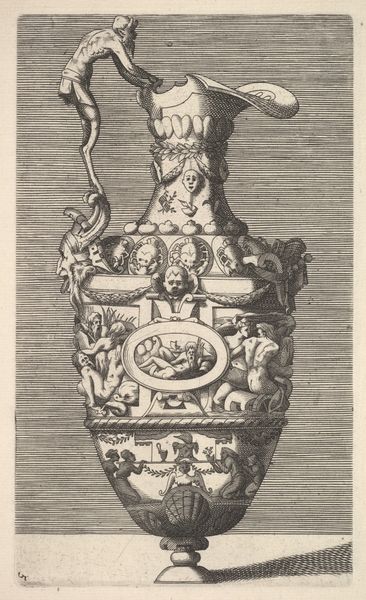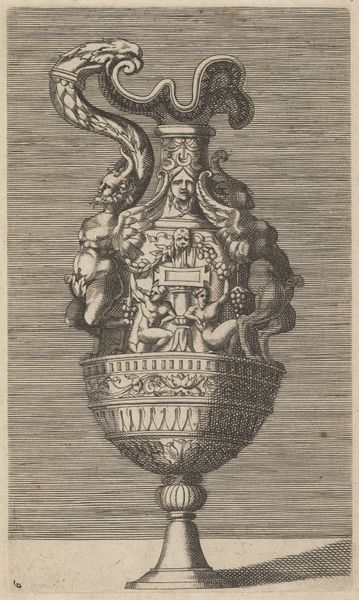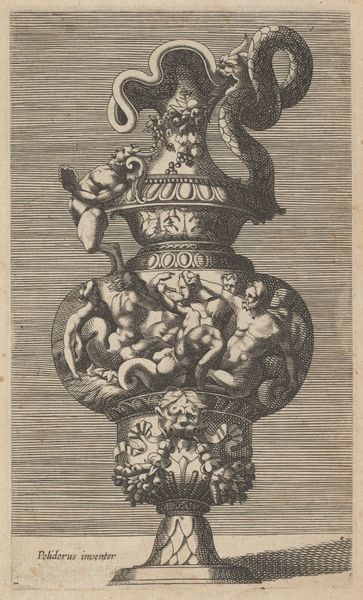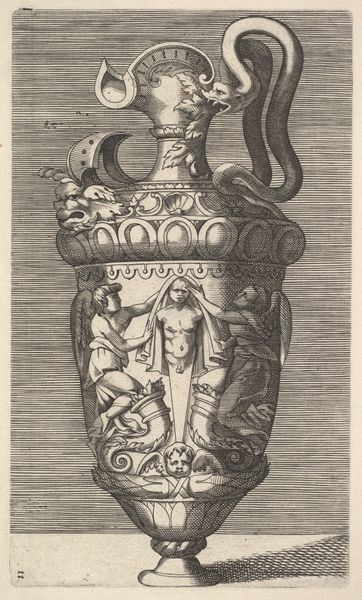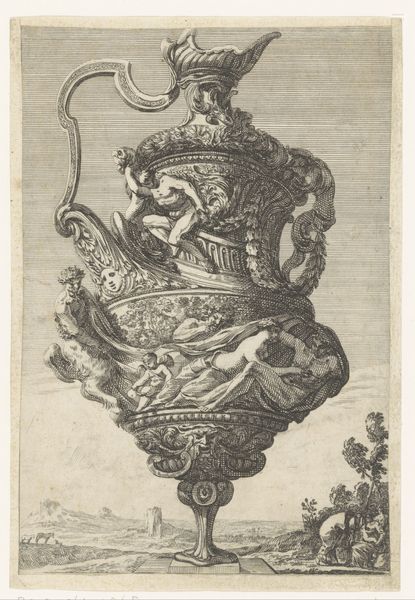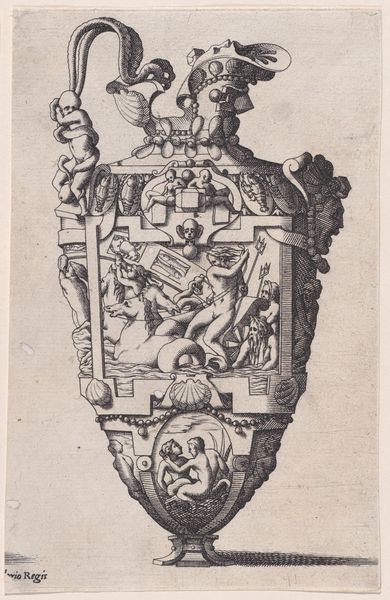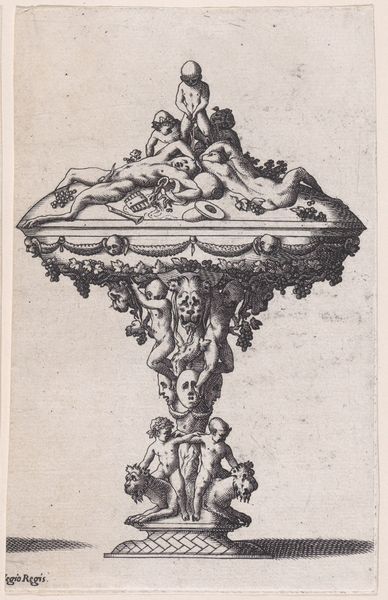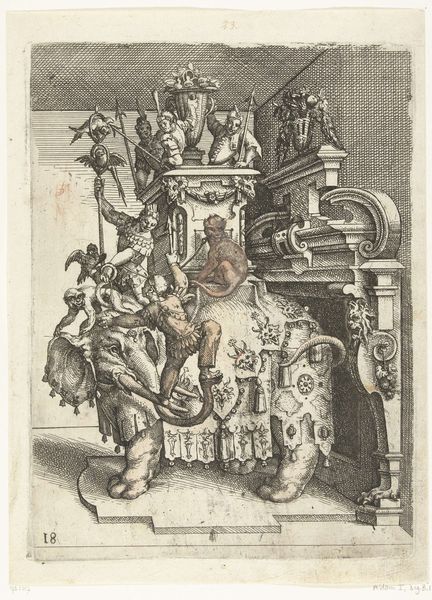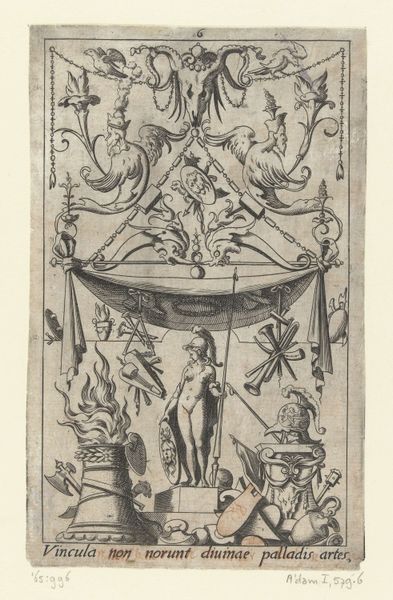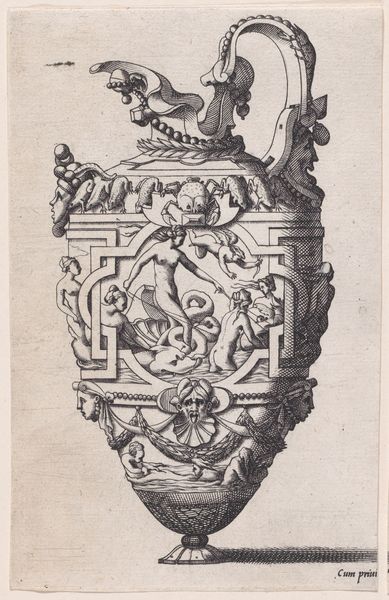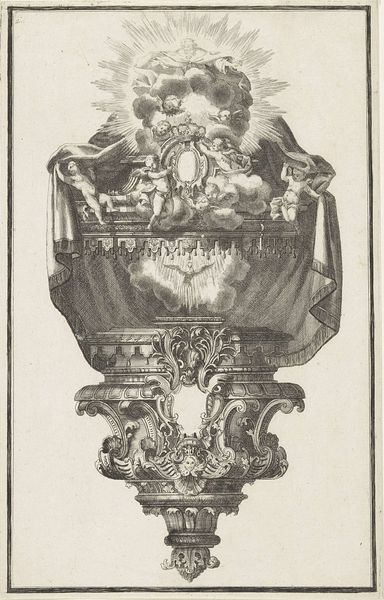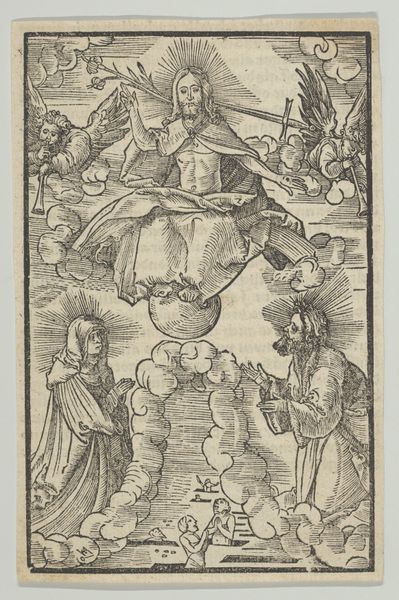
Vase with Helios or Phaeton on the Chariot of the Sun 1670 - 1700
0:00
0:00
drawing, print, engraving
#
drawing
#
baroque
#
pen drawing
# print
#
vase
#
engraving
Dimensions: Plate: 7 1/2 x 4 7/16 in. (19 x 11.2 cm)
Copyright: Public Domain
Curator: Welcome. Let's explore this engraving, "Vase with Helios or Phaeton on the Chariot of the Sun," created between 1670 and 1700. The print work is by René Boyvin. It depicts a wildly ornamented vase brimming with classical motifs. Editor: It strikes me as intensely ornamental, a bit over-the-top actually. There's a darkness too. All that intricate detail almost overwhelms the eye. What function would a vessel of this type play in society at the time? Curator: Its function is representational rather than utilitarian; its profusion is quite striking. Consider how the use of engraved lines describes the roundness of fruit, the expressions on various faces, and the elaborate twisting tails of serpentine creatures that ornament the top. Editor: Right, that ornamentation reads as performative wealth. These classical motifs – the chariot of the sun, the grotesque masks – were employed by European royalty to visually link themselves to the perceived glory of the ancient world, giving visual form to the notion of inherited power. Curator: Precisely. This idealized version of antiquity, as seen through a baroque lens, creates a symbolic universe around the object. Editor: What interests me is what these repeated imageries, in their excess, were actively obscuring, like, what human realities and social inequity were politely ignored? What's deliberately left unseen? Curator: Fair questions, though perhaps unanswerable simply by observation. The engraving displays an overt mastery of technique through a structured accumulation of semiotic components. Editor: Sure, I agree that as a crafted artifact the object’s density invites scrutiny. Still, this level of opulence, historically speaking, seems to broadcast particular hierarchies which invite interrogation from modern observers. Curator: Your reading prompts valuable discussions around material culture and the role of ornamentation, even today. Thank you. Editor: Absolutely, it highlights how decorative arts can reveal social power dynamics and how images work to enforce it. Thanks.
Comments
No comments
Be the first to comment and join the conversation on the ultimate creative platform.
